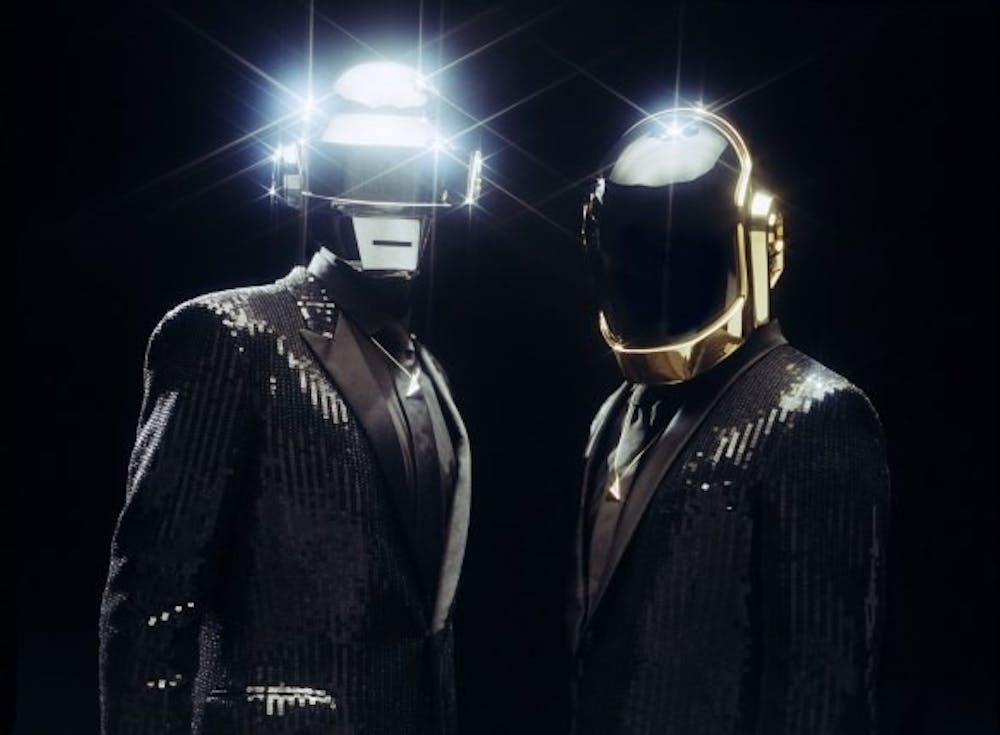
It’s been 8 years since Daft Punk released their last studio album. Amid mountains of hype, their brand new
Random Access Memoriesis already set to become the fastest-selling album of the year, and its single “Get Lucky” has already become the number one single of 2013. If you’re not familiar with the famed house music duo, their explosive release makes this is a prime time to check them out. Although, to understand their impact on house music, perhaps
Random Access Memoriesis not the best place to start.
Random Access Memoriesis in many ways Daft Punk, but it’s not quite the same Daft Punk that longtime fans will remember. Their older albums (Homework, Discovery, Human After All)made a huge impact on the house music scene, and their songs were largely electronic. Brilliant songs that characterized their style, like “Harder Better Faster Stronger” and “Technologic” combined impressive sampling of singing modulated with a vocoder with very danceable electronic drums, bass and synthesized melodies. Meanwhile,Random Access Memoriesshowcases significantly more live instruments: drum machines are frequently replaced by drum sets, electronic bass has taken over for electronically generated bass in many tracks, and guitar occasionally plays in place of synth. A number of the vocal tracks on the album even lack the characteristic robotic vocoder usage found in the majority of their earlier work, “Get Lucky” being the prime example.

If you are looking for strictly electronic/house music, the album will be jarring for you. It is genre-bending to say the least, as is immediately apparent from their list of collaborators.
Random Access Memoriesfeatures vocals from The Animal Collective’s Panda Bear, The Strokes’ Julian Casablancas, N.E.R.D’s Pharrell Williams, and instrumental and vocal tracks from a laundry list of talented musicians from completely different backgrounds. The extensive collaboration allows for a real diversity of sound, but Daft Punk’s style directs the form of each song to be part of a somewhat more cohesive full album. When listening to songs with predominantly live instrumentation like “Lose Yourself to Dance” or the opener “Give Life Back to Music,” there are moments where Daft Punk takes a backseat to the hoard of outside talent they’ve amassed. When the vintage 80s vocoder-processed voices of Thomas Bangalter and Guy-Manuel de Homem-Christo come in, though, it seems as if they were at the heart of the song’s creation and that they’ve merely switched out laptops and synthesizers for human beings. Unfortunately, they lose some of their distinctive voice, both literally and figuratively, by merging it with the style and influence of so many other talented musicians.
A main through-line in the album is the incorporation of smooth, funky live drums, bass, guitar, and vocals in songs like their hit single “Get Lucky” and in “Lose Yourself to Dance.” Even in songs that seems more like experimental mixed-genre electronic odysseys (“Touch”, for example) the groovy instrumentation is interwoven with everything else or makes surprise appearances within a given song. Funky-sounding electronic modulations would be nothing new for Daft Punk, as their older music featured distinctly grooving beats and even the occasional funk guitar. However, this newer sound, “Da Funk” if you will, leans far enough toward pure funk that would make it just as appropriate (if not more so) for a disco as for a discothèque. If your issue with Daft Punk before was that you enjoyed their vocoders and funky sampling but could do without all that house music stuff, then you’re likely to enjoy what they’ve done with that aspect of their style. On the other hand, if you were attracted to them as excellent electronic DJs, you may be disappointed by the merging of their style with so much live music.

Daft Punk has also been successful in the past with creating sad, sweet electronic ballads and relaxing ambient pieces as well. This style makes regular appearances in
Random Access Memoriesin songs such as “The Game of Love” and “Within.” Daft Punk’s strength lies in creating memorable, danceable grooves with catchy hooks, but their flexibility in tone has allowed them to produce some very heartbreakingly beautiful vocoder crooning in the album. Yet their more mellow and ambient songs tend to break up the flow between songs, and they can get excessively experimental. At times, Daft Punk comes across as a pair of kids playing with expensive toys; they become momentarily obsessed with toying around with the features on a vintage synthesizer and can drag songs on a little too long (“Contact”, I’m looking at you). For the most part, the power they bring to the table with their faster-paced songs compensates for this. Like a lot of electronic music, though, Daft Punk does tend to have repetitive song structures. The more diverse composition and experimental style does a lot to avoid this in
Random Access Memories,but the lyrics do get redundant.
So, isRandom Access Memoriesa good album? Yes, but it’s not the Daft Punk you’re expecting. It’s a break from the repetitive but catchy house music Daft Punk helped popularize as a genre that we all thought we wanted, but instead it gives us something fresh but retro, a satisfying albeit disorienting package. Bangalter and de Homem-Christo have delivered something alternating between funky, strange, infectious, and sweet, with the end result as a sort of musical rollercoaster ride. Listening to the album is absolutely an experience. Before the end you’ll find yourself bobbing your head, then sighing sadly, then questioning what on earth you’re listening to. All in all, it’s fun, exciting, and definitely worth a listen.








